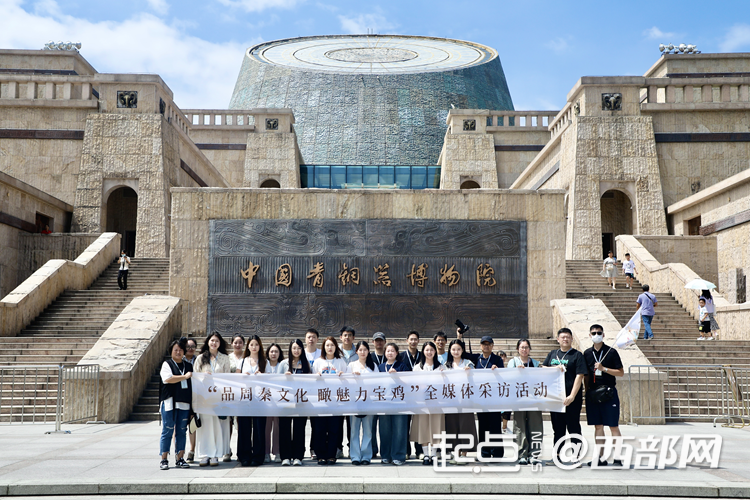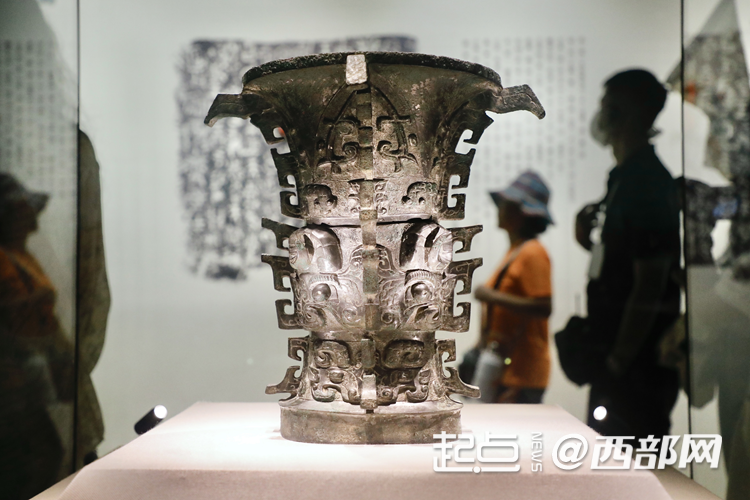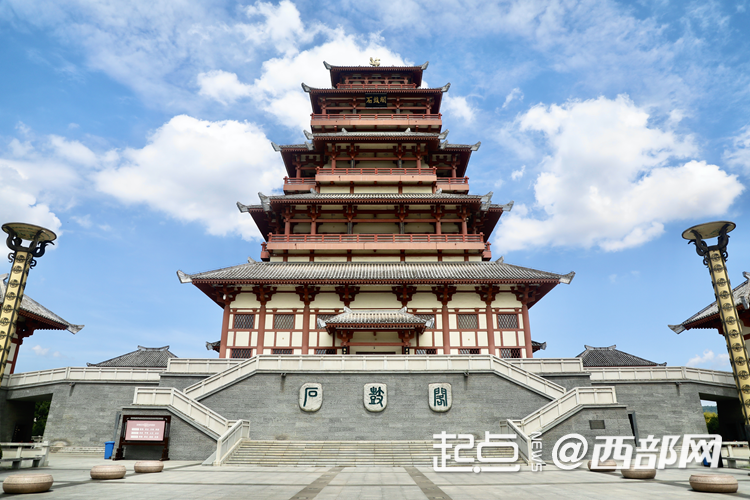source:Discover Shaanxi editor:张怡馨
On August 27th, the all-media activity "Discover the Civilization of Zhou and Qin Dynasties, Capture the Charm of Baoji" was launched in Baoji.

For the first stop, the media group visited the Baoji Bronzeware Museum. Ancient Chinese bronzewares were an essential part of the political life at that time, also the material carrier of ritual and music civilization, as well as the embodiment of ancient economy, culture, thought and art. As the cradle of the civilization of the Zhou and Qin Dynasties, Baoji was inherited with a large number of precious bronzewares.
In the exhibition hall of the museum, the exquisitely cast bronzes are dizzying. He Zun, treasure of the museum, quickly caught everybody's attention. He Zun functioned as a wine vessel in the early Western Zhou Dynasty, and the inscription of He Zun documented the King Cheng of Zhou establishing the capital and holding various rituals, which is of great significance to the study of the history and culture of the Western Zhou Dynasty.

He Zun
Wang Hong, the associate researcher at the Baoji Bronzeware Museum, introduced that the bronzewares of the Western Zhou Dynasty mainly reflected the ritual culture at that time at three levels: state, society and individual. At the state level, the Western Zhou Dynasty established and standardized various political systems such as the patriarchal clan system, the feudatory system, the Jifu system, and the Chinese nobility system. This regime not only laid the foundation for the bureaucratic system of China's successive feudal dynasties, but also dominated the political tradition of China for thousands of years.
Jifu system: a political system containing the spatial planning and governance ideas for the region and the country in ancient China.
"At the social level, the interpretation of 'virtue' was very crucial. There were concept of governing the state by virtue, the rule of law idea of virtue over punishment. At the individual level, there are many more, people's daily behavior norms, clothing, food, housing and transportation, all reflect the rites of Zhou. In today's etiquette norms of our daily life, we can still see the legacy of the rites of Zhou." Wang Hong said.

Wang Hong introduced that in recent years, the Baoji Bronzeware Museum has applied virtual reality (VR), augmented reality (AR) and other technologies to help the visitors better experience the Zhouli culture. At the same time, the development of cultural and creative products related to Zhouli culture helps spread the Zhou culture and bring economic value.

Shi-ku Pavilion
The media group also visited the Shi-ku Pavilion located in the Shi-ku Garden in China. The pavilion imitates the architectural style of the Qin and Han dynasties, with 9 floors inside and 5 floors from outside. This hierarchical structure highlights the respected status of the Zhou and Qin civilization in the history of the Chinese nation. The pavilion mainly displays the stone drum culture and excellent calligraphy works of the past dynasties, and provides visitors with a bird's-eye view of the city, and it is also a landmark building in Baoji City.